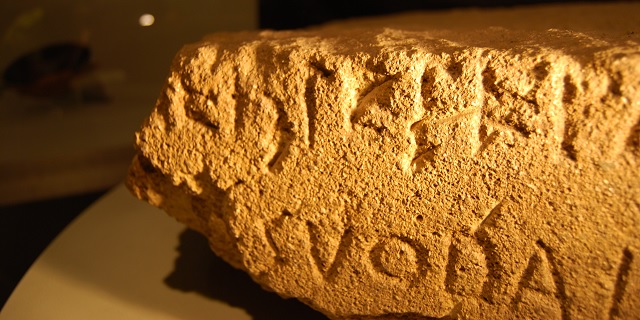By Charles Hedrick
Header Image: Iscrizione latina arcaica, VI secolo a.C. EDR 078476. Photo by Giulia Sarullo – Own work, via Wikimedia CC BY-SA 4.0.
EAGLE, the Electronic Archive of Greek and Latin Epigraphy, was conceived in 1997 by the Italian Epigrapher
Silvio Panciera (1933–2016). Based at Sapienza — Università di Roma, it appeared under the aegis of the Association Internationale d’Épigraphie Grecque et Latine (
AIEGL) and an international steering committee. The site launched in 2003, with the goal of providing a gateway for the search of all Greek and Latin inscriptions.
It began with a collaboration of four major databases of Roman inscriptions. Briefly:
- The Epigraphische Datenbank Heidelberg (EDH, founded in 1986 by Géza Alföldy). EDH was originally intended to include all Roman inscriptions. From the outset the project included bibliographic and photographic databases. With the launch of EAGLE the focus of the project was restricted to the Roman provinces, excluding Spain and Italy with its islands. The project now maintains records for approximately 75,000 inscriptions, and many entries include photographs. Data entry is largely complete for many provinces. Most of the auxiliary information (metadata) for texts in the database is provided in German or English.
- The Epigraphic Databank Roma (EDR, founded in 1999 by Silvio Panciera). EDR presents inscriptions from the city of Rome, Italy, Sicily, and Sardinia, excluding Christian texts. The database now consists of 84,573 documents, and many records include photographs. The collections for many regions and ancient cities of Italy are now fully entered, and completion of the database is projected before 2020. Much of the metadata for EDR inscriptions is in Latin.
- The Epigraphic Database Bari (EDB, founded in 1988 by Carlo Carletti). The project assembles the Christian inscriptions from the city of Rome from the 3rd to 8th centuries CE. Most of the material for the database has been provided by the second edition (nova series) of the Inscriptiones Christianae Vrbis Romae (ICVR, 1922–1992), a project also now administered at Bari. Many records are linked to photographs provided by the Pontificia Commissione di Archeologia Sacra (PCAS). At latest report, the database contains 40,815 texts. The metadata for these texts is as a rule provided in Latin.
- Hispania Epigraphica (variously abbreviated, but most recently HE, founded in 2002 as a joint project of the Archivo Epigráfico de Hispania and Kurt Schaller of the Universität Salzburg). It is difficult to ferret out information about this database. The informational links on the project homepage are empty. Whatever the details of its history and the status of its collection, HE contains 30,798 texts from Spain and Portugal. Most entries are linked to photographs; the database includes a bibliography. As a rule, the metadata are in Spanish.

No comments:
Post a Comment